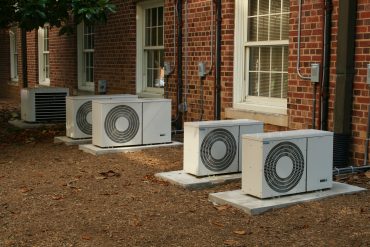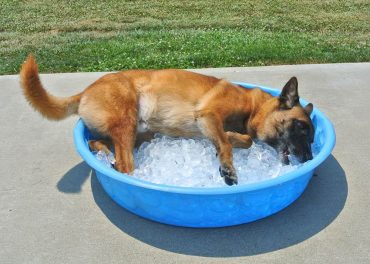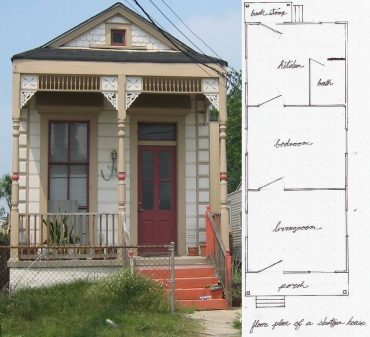
John Bleasby
Kicking our addiction to A/C
Canadian ContractorWith the planet heating up, low-energy alternatives to mechanical cooling are needed
As much as we Canadians look forward to summer, increased heat and humidity impacts living comfort inside the home. Air conditioning has been the go-to solution for decades, with installations estimated in over 80 per cent of North American households, not to mention most restaurants, stores, museums, and office buildings. There’s little doubt that homeowners of the late 20th and early 21st century are hooked on air conditioning. In fact, it’s hard to imagine a new home built today without central air as a key selling feature.
It doesn’t have to be that way, however. In fact, there is a built-in conflict between the energy requirements to run air conditioning and the global objective of reducing energy consumption. The answers lie in smarter designs and improved building envelope construction with a bit of lifestyle adaption thrown in.

Mechanical air conditioning has been the go-to solution for summertime heat and humidity for decades
First, let’s take a look at the harmful effects of summertime heat, and particularly the humidity associated that goes with it, and then some remediation steps that don’t involve an air conditioner.
Physical damage through excessive humidity
“It ain’ the heat, it’s the humidity.” We’ve all probably heard that before. Beyond personal discomfort, however, it’s actually true that some materials and moisture-sensitive personal belongings can be damaged by humidity, artwork and guitars for example. Furniture, even kitchen cabinets, are at risk says Dr. HVAC. Wood flooring can expand or buckle, furniture can get smelly. There’s a link between higher temperatures and humidity and the health of the indoor environment. High humidity can cause toxic materials embedded in furniture — formaldehyde springs to mind — to leech out. More commonly, mould growth can increase significantly as well, not only a near-term health hazard but a potential major resale issue down the road. Allergic reactions to mould include: wheezing, rashes, watery or itchy eyes, and coughing. In extreme cases, high exposure to certain moulds can cause serious illness.
Weather linked to mood swings
In his book, Weather Matrix and Human Behaviour (Dec. 1980), Michael A. Persinger looks at the human autonomic nervous system and how it is affected by weather. As one reviewer writes, “Persinger estimates that some 10 per cent of the population is ‘weather sensitive.’ In these people, changes in the weather, particularly rapid changes in temperature and humidity, will generate perturbances in the autonomic nervous system. Listlessness, increases in pain, irritability, alterations in vascular tone and water balance can all be brought about by weather-related effects on the autonomic nervous system.”

Those “Dog Days of Summer” affect everyone!
Is air conditioning the only answer?
While an air conditioning system has been the push-button solution to many of these issues for decades, architects and environmental experts agree that there are other ways to deal with summer heat and humidity outside of mechanical systems.
Alternatives start with home design
Some pundits suggest that cave homes or underground residences are an answer. Others recall that thick earthen walls, used for centuries to insulate homes, should come back into fashion. Those are fairly extreme solutions, however. However, on a more every day and practical level, the basic design of a house and insulation of its building envelope can have a positive impact on its ability to stay cool. It doesn’t all have to be new technology either. After all, while global warming pundits have been expressing concern about an overheated planet for only a few decades, heat and humidity have been issues for home builders and owners for some time.
Getting aggressive with Passiv
The orientation of the home itself and the placement of windows can have a dramatic effect on both the cooling and heating of a home. The Passiv Haus principles are gaining more and more attention everywhere. In traditionally hot counties like Australia, home design is increasingly focussed on envelope design. In Canada and air circulation, using higher grade windows placed higher on south-facing walls, in combination with generous roof overhangs, can protect the home from the sun’s heat in summer while allowing it to warm in winter.

Traditional “Shotgun House” design has been proven to encourage room-to-room air circulation
At the same time, beating the heat doesn’t have to be complicated or expensive. In fact, in low incomes in areas of the U.S. South, “Shotgun Houses” are often seen — long narrow buildings, one-room wide and extending back. This design allows breezes through screen doors and open windows to run room-to-room for the entire length, which in turn can be supplemented by simple fans. Other design use wrap-around porches to allow the heat from outside to be absorbed outside of the main living area, and to encourage cross ventilation. And don’t forget trees. While new home developments are often placed in open green fields with no natural shade, builders should, if possible, retain as many mature trees around the home. Their shade cools the house in summer, yet when bare of their leaves in winter, the sun‘s rays can pass to passively heat the building.
Addressing client lifestyles in a modern, energy-efficient world
There are also lifestyle issues that can be discussed with clients. For example, an outdoor Bar-B-Que is certainly a great alternative to turning on the kitchen oven to cook a roast. It’s a reason to include attractive outdoor or screen-in living spaces in the home’s design or renovation. Clients might also need reminding that if higher efficiency windows are used in construction or in a renovation, they could possibly be larger in size, thus reducing the amount of artificial light needed, saving energy costs over time while improving a room’s openness and atmosphere.
If all else fails…
There are alternatives to running an air conditioning system constantly. The worrisome humidity issue associated with the tighter homes of today can be mitigated with the placement of specific species of houseplants that absorb moisture, for example. Using the HRV and the forced air furnace’s fan throughout the summer, even with windows open, can help recirculate air in corners of the home where mould build-up might otherwise occur. Installing ceiling fans encourages air movement. At the very least, air conditioning use can be minimized in a well-insulated house by cooling the house down at night when rates are lower. Or open windows at night — it will give the house a head start for a hot day, and cut back the need for air conditioning during the hottest daytime periods.
Air conditioning is probably here to stay. However, with global warming in the news, along with the associated increased energy costs and carbon footprints concerns, contractors should be prepared to have client discussions about alternatives to a hermetically sealed, air conditioned home.
Got feedback? Make your opinion count by using the comment section below,
or by sending an email to:
JBleasby@canadiancontractor.ca
Follow John on Instagram and on Twitter for notifications about his latest posts

Advertisement
Print this page

This is a good balanced article concluding “Air conditioning is probably here to stay.” Even if AC is not an immediate need, some builders of very energy efficient homes are now recommending designs that can accommodate future mechanical cooling.
In addition, here are some links: “There are lots of ways that design can keep us cool, but in the end we are going to need building science and yes, probably a bit of AC. ” https://www.treehugger.com/green-architecture/i-give-air-conditioning-necessity-now.html”
“I’m increasingly feeling that passive cooling won’t be enough as climate change advances and cooling loads increase. I’m now recommending that in most locations, even if passive conditioning is to be relied on initially, buildings be designed so that they can accommodate mechanical cooling measures down-the-road.” http://www.resilientdesign.org/in-an-age-of-climate-change-passive-cooling-wont-be-enough/
“Researchers from Coventry University tracked temperatures inside eco-homes over three summers and found 72 per cent failed their design criteria. Architect Lynne Sullivan, a member of the Passivhaus Trust, said: ‘There is a danger of overheating in all homes built to the new regulations, particularly flats, and we have been warning the Government.’” https://www.dailymail.co.uk/sciencetech/article-3076091/Summer-danger-red-hot-eco-homes-Insulation-used-buildings-warm-winter-traps-heat-potentially-putting-residents-risk.html
My Eco-Home Nightmare
https://www.spectator.co.uk/2015/06/my-eco-home-nightmare/
Just read this, technology will find a way: “A German-Canadian team thinks it might be possible to use ordinary building air conditioners to pull carbon dioxide out of the atmosphere and convert into “net-zero” emission carbon fuels.” https://www.cbc.ca/radio/quirks/may-4-2019-brain-resuscitation-hippos-supply-algae-skeletons-slug-surgical-glue-and-more-1.5119885/how-air-conditioners-could-keep-you-cool-and-capture-carbon-1.5119911
I completely agree, with growing global temperatures, it is critical to implement low-energy cooling technologies. Sustainable methods to reduce energy consumption while preserving comfort is key moving forward.